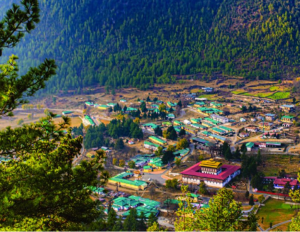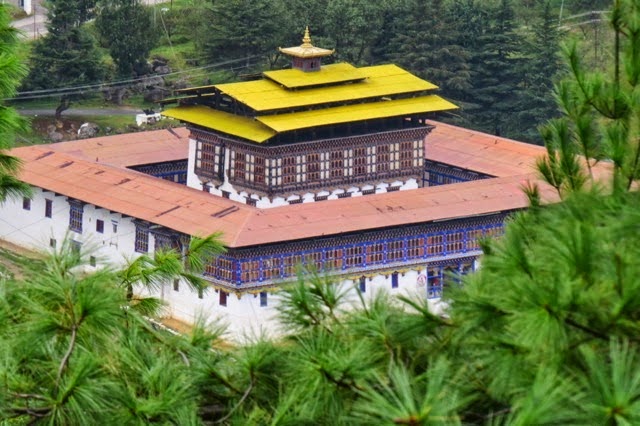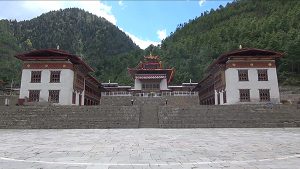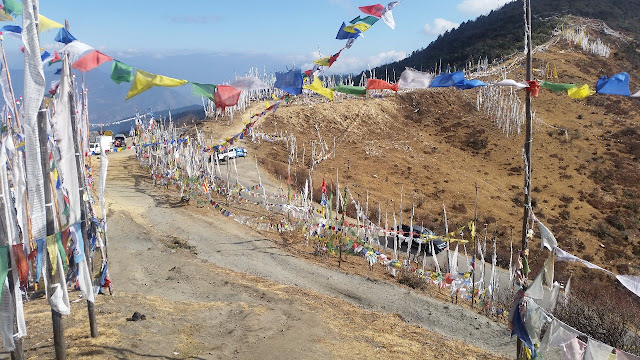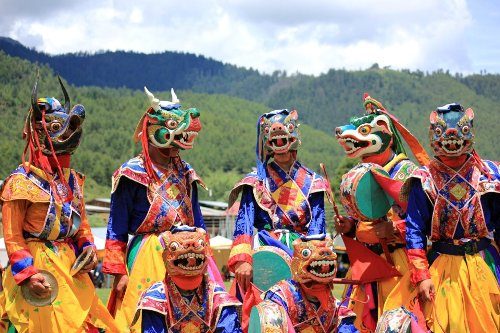Haa Valley
Haa Valley itself is a tranquil and picturesque destination, often referred to as one of Bhutan’s best-kept secrets. Surrounded by forested hills and snow-capped mountains, the valley is dotted with traditional Bhutanese farmhouses and ancient temples. Its peaceful environment and unspoiled charm offer a rare glimpse into authentic rural life in Bhutan. Visitors can enjoy walking through quaint villages, interacting with locals, and experiencing Bhutanese hospitality through homestays. The slow pace of life and natural beauty make Haa ideal for relaxation and cultural immersion.
Haa Dzong
Wangchulo Dzong, commonly referred to as Haa Dzong, was constructed in 1915 to serve as a military base during Bhutan’s strategic frontier consolidation. Unlike other dzongs in Bhutan that function as religious and administrative centers, this one primarily houses the Royal Bhutan Army. Though access inside is restricted, visitors can admire its fortress-like structure and scenic surroundings. The Dzong stands as a symbol of Bhutan’s defense heritage and is a testament to the architectural elegance found across the country.
Lhakhang Karpo (White Temple)
Lhakhang Karpo, meaning “White Temple,” is one of the oldest and most revered temples in Haa. It was built in the 7th century by the Tibetan Buddhist King Songtsen Gampo as part of his mission to subdue a demoness and spread Buddhism across the Himalayas. Located at the base of a sacred hill, this temple is known for its striking white walls, intricate woodwork, and peaceful spiritual ambiance. It plays a vital role in the religious life of the Haa community and remains a key site during local festivals and rituals.
Chelela Pass
Chelela Pass, situated at an altitude of approximately 3,988 meters, is the highest motorable pass in Bhutan. It offers breathtaking views of Mount Jomolhari and Jichu Drakye on clear days. The drive to the pass from Haa or Paro is scenic, with lush forests and cascading waterfalls. At the summit, visitors are greeted by countless colorful prayer flags fluttering in the wind, symbolizing peace and blessings. The area is also a haven for wildflowers and birds, making it a favorite spot for nature enthusiasts, hikers, and photographers.
Haa Summer Festival
The Haa Summer Festival is an annual celebration held in July that showcases the vibrant culture and traditions of the valley. The festival includes traditional sports like archery and yak riding, folk dances, mask performances, and local cuisine tastings. Visitors can also observe local crafts and farming demonstrations, offering a holistic view of Haa’s rich heritage. The festival not only strengthens community bonds but also invites travelers to participate in and appreciate Bhutan’s living culture in an authentic, interactive way.

